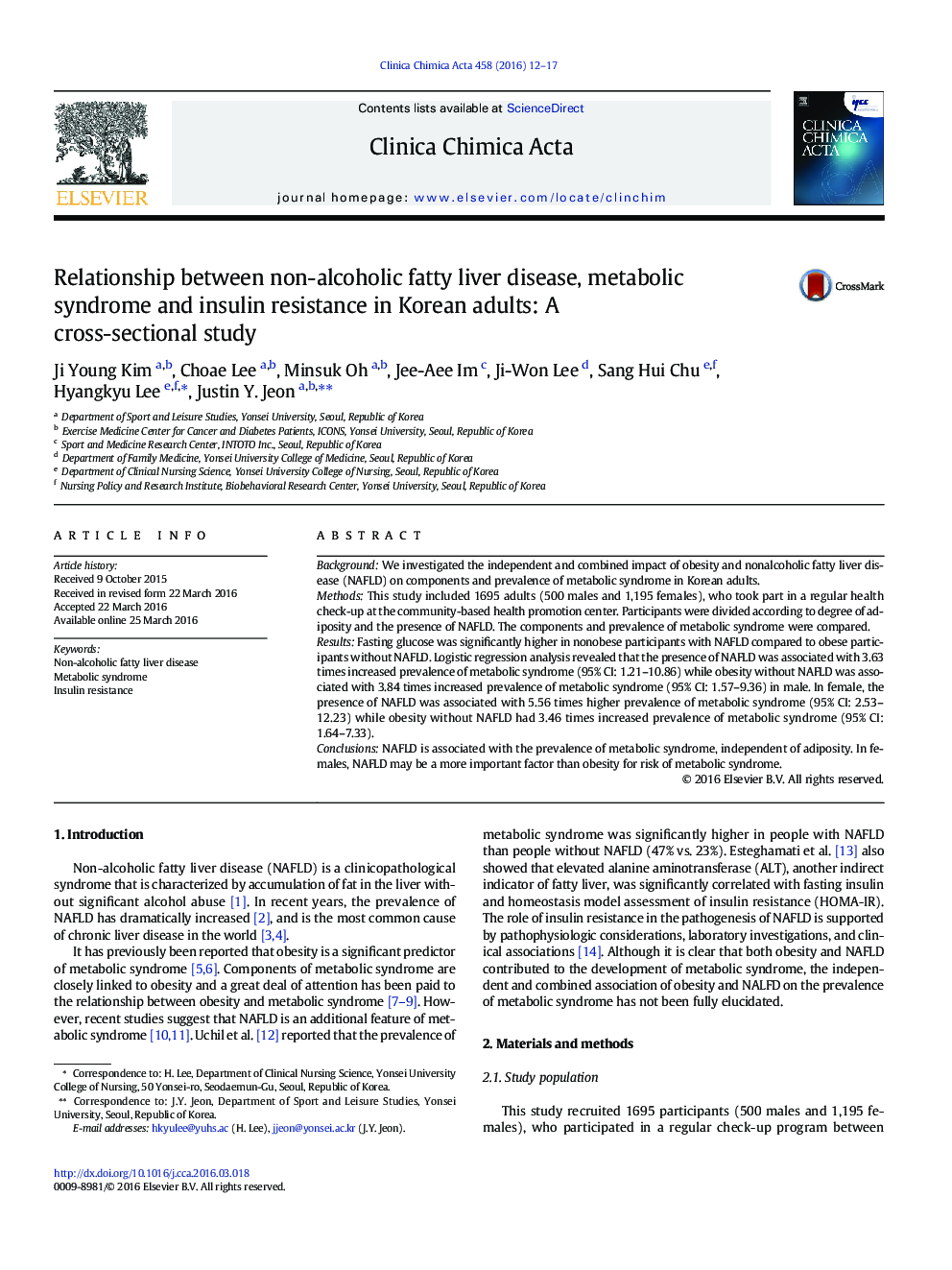| Article ID | Journal | Published Year | Pages | File Type |
|---|---|---|---|---|
| 1965095 | Clinica Chimica Acta | 2016 | 6 Pages |
•BMI and NAFLD are associated with insulin resistance and components of metabolic syndrome.•Presence of obesity and NAFLD is associated with increased prevalence of metabolic syndrome in both male and female.•In female, nonobese with NAFLD has higher odds of having metabolic syndrome compared with obese without NAFLD.
BackgroundWe investigated the independent and combined impact of obesity and nonalcoholic fatty liver disease (NAFLD) on components and prevalence of metabolic syndrome in Korean adults.MethodsThis study included 1695 adults (500 males and 1,195 females), who took part in a regular health check-up at the community-based health promotion center. Participants were divided according to degree of adiposity and the presence of NAFLD. The components and prevalence of metabolic syndrome were compared.ResultsFasting glucose was significantly higher in nonobese participants with NAFLD compared to obese participants without NAFLD. Logistic regression analysis revealed that the presence of NAFLD was associated with 3.63 times increased prevalence of metabolic syndrome (95% CI: 1.21–10.86) while obesity without NAFLD was associated with 3.84 times increased prevalence of metabolic syndrome (95% CI: 1.57–9.36) in male. In female, the presence of NAFLD was associated with 5.56 times higher prevalence of metabolic syndrome (95% CI: 2.53–12.23) while obesity without NAFLD had 3.46 times increased prevalence of metabolic syndrome (95% CI: 1.64–7.33).ConclusionsNAFLD is associated with the prevalence of metabolic syndrome, independent of adiposity. In females, NAFLD may be a more important factor than obesity for risk of metabolic syndrome.
